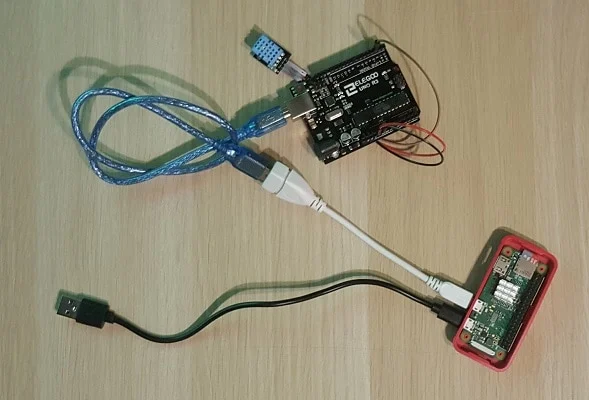

- #Raspberry pi minicom usb install#
- #Raspberry pi minicom usb serial#
- #Raspberry pi minicom usb Pc#
- #Raspberry pi minicom usb Offline#
Your recently viewed items and featured recommendations, Select the department you want to search in.
#Raspberry pi minicom usb serial#
The ability of the USB port on the Pi Zero to be configured as a USB device instead of a host allows it to be used emulate a USB serial port without needing any special cables.
#Raspberry pi minicom usb install#
According to a customer, Zadig helped to install the serial port driver on Windows 7 as well, and the Pico was usable afterwards! Requirements. I have two programs running in c#, one reads USB0 and another one USB1. Then connect the ReceiveA from the FTDI to the Raspberry Pi Transmit pin at pin 8 and the Transmit to the Receive pin at physical pin 10. Did Loki know that Antonia Dreykov was alive? This is a bit trickier than simply changing a setting but only one file needs changing. The serial port is a common way to "talk" to devices and is a feature that most microcontrollers and computers have. If playback doesn't begin shortly, try restarting your device. To test properly involves adding a small circuit to the Arduino, but for the purpose of testing then it works without. We will be using a RS232 to TTL Adapter to create a loop back to the Raspberry Pi. The UART to USB dongle should have TTL voltage levels on UART side (either 3.3V or 5V, depending on the "Another device"). Many people use the serial ports for the serial communication between two Raspberry Pi but for the multiple connections, Serial expansion HAT performs the system with higher efficiency. There is a way of using USB in the drawing. raspberrypi:/etc/rc2.d$i sudo update-rc.d script defaults update-rc.d: using dependency based boot sequencing update-rc.d: error: unable to read /etc/init.d/script Reboot the unit: $ sudo shutdown -r now 8.1.3 Remote Serial Port In . Can I use one of the RPI3 USB ports as a serial port? Website created by Stewart Watkiss - .uk, Third party cookies may be stored when visiting this site. In addition the programming of the Arduino will be performed using the Raspberry Pi so there will be no need for an additional computer. PC-based serial ports usually use +13 to -13 and all RS232-compliant ports use a + to - voltage swing which is completely incompatible with the Pi and most other microprocessors which work at 5V or 3.3V. I am trying to send a large amount of data from my Raspberry Pi 4 to my computer. How were smallpox vaccines enforced in the US? Serial has changed with Raspberry PI Version 3.
#Raspberry pi minicom usb Pc#
If you wish to connect your Raspberry Pi to a PC with a USB port, the simplest option is to use a USB-to-serial cable which uses 3.3 V logic levels (e.g. What you need is the dongle (it does not have to be RS-232 compatible, it does not have to use DB-9 connector and does not use voltage range over 20 volts). If you are using a different manufacturer then you may need to choose a suitable controller or add your own to the Arduino IDE. When in doubt you can see my whole example here.Rev 2021.9. Note: If the screen is still blank you should double check the connections (power led on the Arduino is a good thing to check). But, when you start typing you will notice that the characters you're writing are getting looped back to your terminal. Then run the following: screen /dev/ttyAMA0 115200 Screen is a dead simple way of connecting to a serial port. (go down to the Logic voltage levels section) Sparkfun has some basic level shifters (with schematics) here if you want to learn more.


See more information about level shifters here. Note: the Raspberry Pi runs on 3.3V so you must be sure that anything you connect to it is running 3.3V or has a level shifter. Note: make sure you don't connect a usb cable to the Arduino. You can run a simple test by putting this sketch on your Arduino: #define SERIAL_BAUD 115200Īnd wire it up using the following diagram: In the end I resorted to using the basic python serial console, install pyserial using pip (pip install pyserial) and execute the following command: python -m -p /dev/ttyAMA0 -e I also had exactly the same problem with minicom using the Arduino plugged in to the USB (/dev/ttyUSB0). I could receive the output from the Arduino in minicom but I couldn't get anything to send no matter what settings I tried. I have an Arduino connected to my Raspberry Pi serial port via a level shifter (3.3v to 5v) and was also having issues with minicom.
#Raspberry pi minicom usb Offline#
My minicom footer looks like this as well (just diff baud rate, but shows offline also but works)ĬTRL-A Z for help |115200 8N1 | NOR | Minicom 2.5 | VT102 | Offline *Save those settings and anything you type should show up on the screen, but is actually being transmitted via uarts. I had to set minicom to disable hardware control and the looping worked for me, as well as cross connecting 2 Raspis together over UARTs.Īlso, I use 115200 buad rate on my TTYAMA0 connection string I just went through something similar today.


 0 kommentar(er)
0 kommentar(er)
